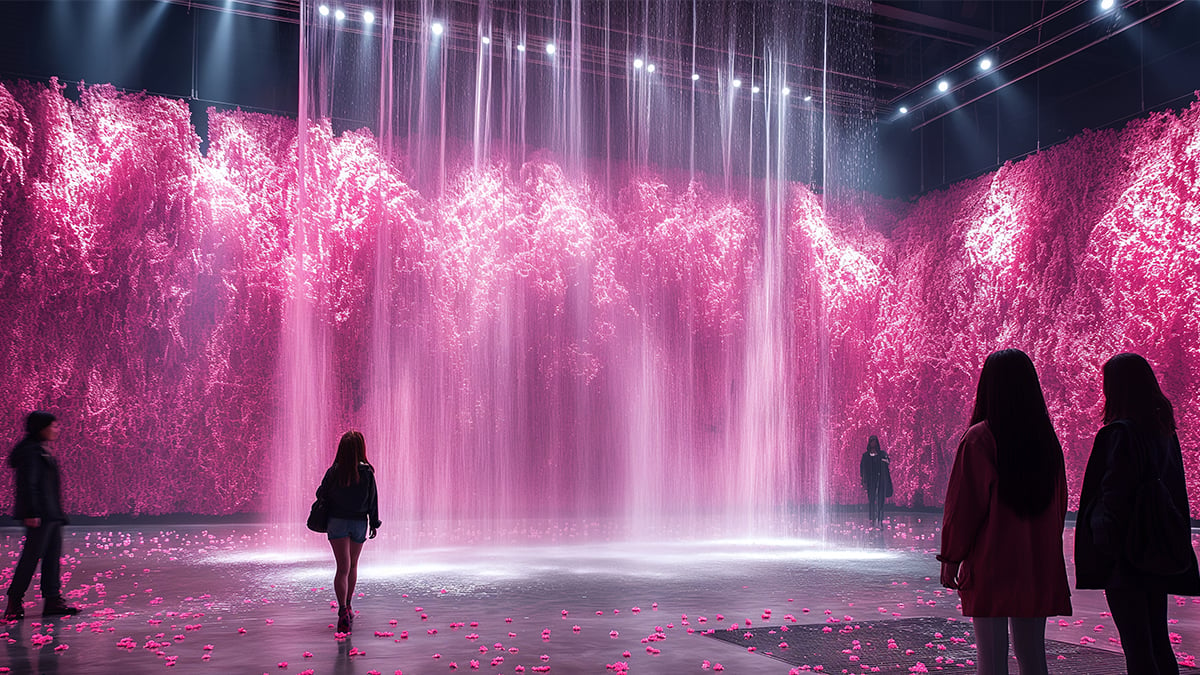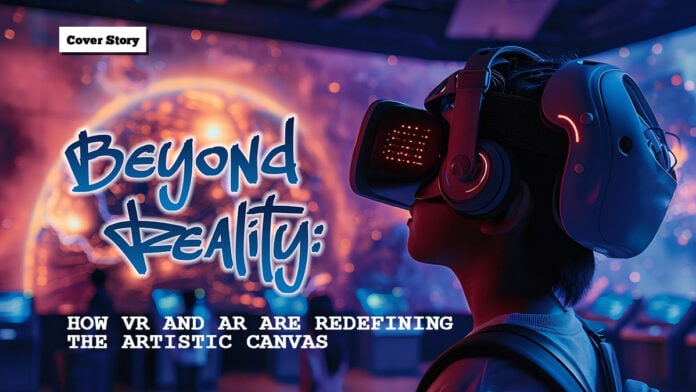VR and AR have not only opened up new artistic canvases for artists but have also empowered those whose visions were once constrained by the limitations of the physical world.
In recent years, Virtual Reality (VR) has transformed how we interact with and appreciate various forms of media. VR has become a pivotal tool in education, leveraging its immersive nature and cost-effectiveness to train professionals in diverse fields.
Less widely recognized, VR has also carved a niche in the art world. The technology’s ability to create immersive experiences has captivated artists, who view it as a boundless canvas. VR’s power to bring the world to our fingertips has made classical art accessible to a broader audience.
Meanwhile, Augmented Reality (AR) has revolutionized our experience of the world around us. Beyond its educational applications, AR has found a prominent place in gaming due to its unique ability to blend the real and virtual. This distinctive fusion has also attracted artists to experiment with AR as a medium for artistic expression.
A bold new canvas
VR and AR art encompass a wide spectrum of possibilities. Many consider VR art akin to traditional art forms—drawings or paintings existing in a three-dimensional VR space. Others view VR art as a fusion of different mediums, resulting in entirely new artistic creations.
AR art, on the other hand, is often seen as a complement to existing works. As a platform that merges the real and virtual, AR has frequently served as a catalyst for artistic pieces. Through a simple phone scan, a physical artwork can transform virtually, existing in two realities simultaneously.
Artists have embraced these new mediums to express their creativity. VR artists have blended drawing and animation to craft vast, immersive pieces that place the viewer in the heart of the action. The technology has also empowered emerging artists to push the boundaries of VR and explore art beyond the confines of three-dimensional space.
AR art, meanwhile, offers the ability to transcend the real and virtual, resulting in something entirely novel. With a wave of a hand or a device scan, artists can alter the nature of their creations. What was once solid can become ethereal, and the ethereal can become tangible.

Forging the Metaverse
VR and AR art surged into the spotlight a few years ago, coinciding with the rise of blockchain technology, non-fungible tokens (NFTs), and the concept of the metaverse. While AR and VR art predated these developments, blockchain technology significantly altered the landscape.
Blockchain technology transcended the digital realm and rapidly found its way into the art world. Artists can leverage the secure network of a blockchain to verify the authenticity of art purchased in the real world by attaching blockchain tokens to the artwork. These tokens, due to the decentralized nature of the blockchain, can track the ownership history of the artwork.
The cryptocurrency boom in the late 2010s also impacted the art world, with new crypto billionaires investing their wealth in real-world assets, including shares in or outright ownership of classical art pieces. Traditional art auctions began accepting cryptocurrency payments, and some even established exclusive blockchains for art transactions. London’s Christie’s auction house, for instance, partnered with Artory to record and secure data about artworks and collectibles on the blockchain.
Beyond real-world art, blockchain tokens led to the emergence of digital art trading. Like traditional art, digital artworks were assigned unique tokens. These tokens, each with its own cryptographic code, became known as non-fungible tokens, or NFTs.
As NFTs gained popularity, artists found new avenues for minting and selling their art on the blockchain. VR and AR artists were among them, their works becoming increasingly sought-after due to the concept of the “metaverse” and Web 3.0, a decentralized internet that envisioned leveraging VR and AR technologies.
While the metaverse remains a distant dream, VR and AR art continue to flourish. Although not as robust as they once were, NFTs continue to reshape the art world and the way art is created and traded.
Bringing the Classics to the World
VR and AR have transformed how we experience art. VR spaces have hosted virtual galleries showcasing classical art pieces, bringing the museum experience closer to home. Curators and art historians utilize these platforms to provide deeper insights into the art and the artists, enhancing viewers’ understanding of the techniques, history, and stories behind the artworks.
Museums and galleries have also harnessed AR and VR to create entirely new immersive experiences based on classic works. The Musée d’Orsay in Paris, for example, has organized exhibits using VR headsets to offer visitors immersive journeys into the art of Van Gogh, Monet, and other masters.
Beyond physical museums, VR and AR are being explored for art and cultural preservation. In 2022, UNESCO and Interpol announced plans to create a virtual museum dedicated to stolen art and cultural objects. The museum aims to raise awareness of the illicit art trade and potentially facilitate the recovery of stolen pieces. Renders for the virtual museum were unveiled in 2023, and it is expected to launch in 2025, featuring stolen works from Interpol’s list.

In Ukraine, VR technology has been used to create the Museum of Stolen Art, an online space documenting art lost or stolen during the ongoing conflict. It serves as a poignant reminder of the cultural toll of war and the importance of digital platforms for preserving a nation’s heritage.
VR and AR have not only opened up new artistic canvases for artists but have also empowered those whose visions were once constrained by the limitations of the physical world. These mediums are not merely tools for artistic expression but are extensions of our culture, testaments to humanity’s ever-evolving technology, and reflections of our enduring desire to express ourselves in new and innovative ways.
Words by Gabriel Pe
Also published in GADGETS MAGAZINE June 2024 Issue
